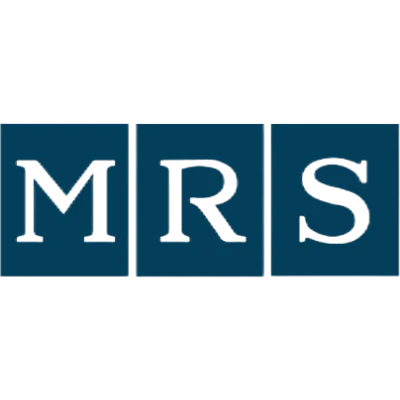Open Access


NPG Asia Materials, volume 9, issue 9, pages e433
Fluorine-functionalized metal–organic frameworks and porous coordination polymers
Publication type: Journal Article
Publication date: 2017-09-29
Journal:
NPG Asia Materials
Quartile SCImago
Q1
Quartile WOS
Q1
Impact factor: 9.7
ISSN: 18844049, 18844057
Condensed Matter Physics
General Materials Science
Modeling and Simulation
Abstract
Fluorine, the element with the highest electronegativity and low electric polarizability, can produce a variety of characteristics, including specific adsorption sites for molecules as well as flexibility to the host materials. In this review, we will introduce fluorine-functionalized metal–organic frameworks/porous coordination polymers that show unique and unprecedented structures, structural transformations, and gas and vapor adsorption/separation properties derived from the fluorine characteristics. Adding chemistry's most electronegative atom to porous polymer networks may lead to gas-specific filters capable of flexible ‘breathing’. The tunable activity of metal–organic frameworks towards specific guest molecules, such as drugs or pollutants, has led to a flurry of recent research reports. Shin–ichiro Noro and Takayoshi Nakamura from Hokkaido University in Japan review these findings to show the potential of fluorinated building blocks in porous polymers. The hydrophobic nature and strong bond polarity of organic–fluorine units induce preferential adsorption sites and hydrophobic character useful for oil spill clean-ups. Alternatively, combining inorganic fluorine anions with neutral molecules produces weaker network bonds that easily slip and deform in certain directions. Framework flexibilities and other properties including luminescent emission for sensors are adjustable through appropriate organic or inorganic fluorine units. Fluorine, the element with the highest electronegativity and low electric polarizability, can produce a variety of characteristics, including specific adsorption sites for molecules as well as flexibility to the host materials. In this review, we will introduce fluorine-functionalized metal–organic frameworks/porous coordination polymers that show unique and unprecedented structures, structural transformations, and gas and vapor adsorption/separation properties derived from the fluorine characteristics.
Top-30
Citations by journals
|
1
2
3
4
5
|
|
|
Coordination Chemistry Reviews
5 publications, 5.05%
|
|
|
Chemistry - A European Journal
5 publications, 5.05%
|
|
|
ACS applied materials & interfaces
5 publications, 5.05%
|
|
|
Dalton Transactions
5 publications, 5.05%
|
|
|
Inorganic Chemistry
4 publications, 4.04%
|
|
|
New Journal of Chemistry
4 publications, 4.04%
|
|
|
Journal of Physical Chemistry C
3 publications, 3.03%
|
|
|
Journal of Solid State Chemistry
3 publications, 3.03%
|
|
|
Chemical Communications
3 publications, 3.03%
|
|
|
Journal of Materials Chemistry A
3 publications, 3.03%
|
|
|
RSC Advances
3 publications, 3.03%
|
|
|
Journal of Structural Chemistry
3 publications, 3.03%
|
|
|
Journal of Molecular Structure
2 publications, 2.02%
|
|
|
International Journal of Hydrogen Energy
2 publications, 2.02%
|
|
|
Small
2 publications, 2.02%
|
|
|
Journal of the American Chemical Society
2 publications, 2.02%
|
|
|
Chemistry of Materials
2 publications, 2.02%
|
|
|
CrystEngComm
2 publications, 2.02%
|
|
|
ACS Sustainable Chemistry and Engineering
1 publication, 1.01%
|
|
|
APL Materials
1 publication, 1.01%
|
|
|
Nano Research
1 publication, 1.01%
|
|
|
Journal of Materials Science: Materials in Electronics
1 publication, 1.01%
|
|
|
Journal of Inorganic and Organometallic Polymers and Materials
1 publication, 1.01%
|
|
|
BMC Chemistry
1 publication, 1.01%
|
|
|
MRS Energy & Sustainability
1 publication, 1.01%
|
|
|
NPG Asia Materials
1 publication, 1.01%
|
|
|
Chemical Engineering Journal
1 publication, 1.01%
|
|
|
Microporous and Mesoporous Materials
1 publication, 1.01%
|
|
|
Electrochimica Acta
1 publication, 1.01%
|
|
|
Inorganica Chimica Acta
1 publication, 1.01%
|
|
|
1
2
3
4
5
|
Citations by publishers
|
5
10
15
20
25
|
|
|
Royal Society of Chemistry (RSC)
24 publications, 24.24%
|
|
|
Elsevier
22 publications, 22.22%
|
|
|
American Chemical Society (ACS)
20 publications, 20.2%
|
|
|
Wiley
17 publications, 17.17%
|
|
|
Springer Nature
5 publications, 5.05%
|
|
|
Pleiades Publishing
4 publications, 4.04%
|
|
|
Taylor & Francis
2 publications, 2.02%
|
|
|
American Institute of Physics (AIP)
1 publication, 1.01%
|
|
|
Materials Research Society
1 publication, 1.01%
|
|
|
Walter de Gruyter
1 publication, 1.01%
|
|
|
Thieme
1 publication, 1.01%
|
|
|
Autonomous Non-profit Organization Editorial Board of the journal Uspekhi Khimii
1 publication, 1.01%
|
|
|
5
10
15
20
25
|
- We do not take into account publications without a DOI.
- Statistics recalculated only for publications connected to researchers, organizations and labs registered on the platform.
- Statistics recalculated weekly.
{"yearsCitations":{"type":"bar","data":{"show":true,"labels":[2018,2019,2020,2021,2022,2023,2024],"ids":[0,0,0,0,0,0,0],"codes":[0,0,0,0,0,0,0],"imageUrls":["","","","","","",""],"datasets":[{"label":"Citations number","data":[8,12,20,18,14,15,12],"backgroundColor":["#3B82F6","#3B82F6","#3B82F6","#3B82F6","#3B82F6","#3B82F6","#3B82F6"],"percentage":["8.08","12.12","20.2","18.18","14.14","15.15","12.12"],"barThickness":null}]},"options":{"indexAxis":"x","maintainAspectRatio":true,"scales":{"y":{"ticks":{"precision":0,"autoSkip":false,"font":{"family":"Montserrat"},"color":"#000000"},"stacked":false},"x":{"ticks":{"stepSize":1,"precision":0,"font":{"family":"Montserrat"},"color":"#000000"},"stacked":false}},"plugins":{"legend":{"position":"top","labels":{"font":{"family":"Montserrat"},"color":"#000000"}},"title":{"display":true,"text":"Citations per year","font":{"size":24,"family":"Montserrat","weight":600},"color":"#000000"}}}},"journals":{"type":"bar","data":{"show":true,"labels":["Coordination Chemistry Reviews","Chemistry - A European Journal","ACS applied materials & interfaces","Dalton Transactions","Inorganic Chemistry","New Journal of Chemistry","Journal of Physical Chemistry C","Journal of Solid State Chemistry","Chemical Communications","Journal of Materials Chemistry A","RSC Advances","Journal of Structural Chemistry","Journal of Molecular Structure","International Journal of Hydrogen Energy","Small","Journal of the American Chemical Society","Chemistry of Materials","CrystEngComm","ACS Sustainable Chemistry and Engineering","APL Materials","Nano Research","Journal of Materials Science: Materials in Electronics","Journal of Inorganic and Organometallic Polymers and Materials","BMC Chemistry","MRS Energy & Sustainability","NPG Asia Materials","Chemical Engineering Journal","Microporous and Mesoporous Materials","Electrochimica Acta","Inorganica Chimica Acta"],"ids":[13437,24708,1458,8473,24714,1404,8859,2684,9073,14919,3100,14105,9347,8699,9872,4813,6428,7359,18886,8393,12211,20208,4225,22509,28525,19526,16275,6712,15613,1406],"codes":[0,0,0,0,0,0,0,0,0,0,0,0,0,0,0,0,0,0,0,0,0,0,0,0,0,0,0,0,0,0],"imageUrls":["\/storage\/images\/resized\/GDnYOu1UpMMfMMRV6Aqle4H0YLLsraeD9IP9qScG_medium.webp","\/storage\/images\/resized\/bRyGpdm98BkAUYiK1YFNpl5Z7hPu6Gd87gbIeuG3_medium.webp","\/storage\/images\/resized\/iLiQsFqFaSEx6chlGQ5fbAwF6VYU3WWa08hkss0g_medium.webp","\/storage\/images\/resized\/leiAYcRDGTSl5B1eCnwpSGqmDEUEfDPPoYisFGhT_medium.webp","\/storage\/images\/resized\/iLiQsFqFaSEx6chlGQ5fbAwF6VYU3WWa08hkss0g_medium.webp","\/storage\/images\/resized\/leiAYcRDGTSl5B1eCnwpSGqmDEUEfDPPoYisFGhT_medium.webp","\/storage\/images\/resized\/iLiQsFqFaSEx6chlGQ5fbAwF6VYU3WWa08hkss0g_medium.webp","\/storage\/images\/resized\/GDnYOu1UpMMfMMRV6Aqle4H0YLLsraeD9IP9qScG_medium.webp","\/storage\/images\/resized\/leiAYcRDGTSl5B1eCnwpSGqmDEUEfDPPoYisFGhT_medium.webp","\/storage\/images\/resized\/leiAYcRDGTSl5B1eCnwpSGqmDEUEfDPPoYisFGhT_medium.webp","\/storage\/images\/resized\/leiAYcRDGTSl5B1eCnwpSGqmDEUEfDPPoYisFGhT_medium.webp","\/storage\/images\/resized\/oZgeErrVFhuDksyqFURLvYS1wtVSBWczh001igGo_medium.webp","\/storage\/images\/resized\/GDnYOu1UpMMfMMRV6Aqle4H0YLLsraeD9IP9qScG_medium.webp","\/storage\/images\/resized\/GDnYOu1UpMMfMMRV6Aqle4H0YLLsraeD9IP9qScG_medium.webp","\/storage\/images\/resized\/bRyGpdm98BkAUYiK1YFNpl5Z7hPu6Gd87gbIeuG3_medium.webp","\/storage\/images\/resized\/iLiQsFqFaSEx6chlGQ5fbAwF6VYU3WWa08hkss0g_medium.webp","\/storage\/images\/resized\/iLiQsFqFaSEx6chlGQ5fbAwF6VYU3WWa08hkss0g_medium.webp","\/storage\/images\/resized\/leiAYcRDGTSl5B1eCnwpSGqmDEUEfDPPoYisFGhT_medium.webp","\/storage\/images\/resized\/iLiQsFqFaSEx6chlGQ5fbAwF6VYU3WWa08hkss0g_medium.webp","\/storage\/images\/resized\/ARM4e6URKRsbRZvIF0vFis9DjxGloBjnBYJXbHmZ_medium.webp","\/storage\/images\/resized\/voXLqlsvTwv5p3iMQ8Dhs95nqB4AXOG7Taj7G4ra_medium.webp","\/storage\/images\/resized\/voXLqlsvTwv5p3iMQ8Dhs95nqB4AXOG7Taj7G4ra_medium.webp","\/storage\/images\/resized\/voXLqlsvTwv5p3iMQ8Dhs95nqB4AXOG7Taj7G4ra_medium.webp","\/storage\/images\/resized\/voXLqlsvTwv5p3iMQ8Dhs95nqB4AXOG7Taj7G4ra_medium.webp","\/storage\/images\/resized\/uIgdLKrr5j2RcUZqeCI5v4KcXsLbz9m8NVJHai5O_medium.webp","\/storage\/images\/resized\/voXLqlsvTwv5p3iMQ8Dhs95nqB4AXOG7Taj7G4ra_medium.webp","\/storage\/images\/resized\/GDnYOu1UpMMfMMRV6Aqle4H0YLLsraeD9IP9qScG_medium.webp","\/storage\/images\/resized\/GDnYOu1UpMMfMMRV6Aqle4H0YLLsraeD9IP9qScG_medium.webp","\/storage\/images\/resized\/GDnYOu1UpMMfMMRV6Aqle4H0YLLsraeD9IP9qScG_medium.webp","\/storage\/images\/resized\/GDnYOu1UpMMfMMRV6Aqle4H0YLLsraeD9IP9qScG_medium.webp"],"datasets":[{"label":"","data":[5,5,5,5,4,4,3,3,3,3,3,3,2,2,2,2,2,2,1,1,1,1,1,1,1,1,1,1,1,1],"backgroundColor":["#3B82F6","#3B82F6","#3B82F6","#3B82F6","#3B82F6","#3B82F6","#3B82F6","#3B82F6","#3B82F6","#3B82F6","#3B82F6","#3B82F6","#3B82F6","#3B82F6","#3B82F6","#3B82F6","#3B82F6","#3B82F6","#3B82F6","#3B82F6","#3B82F6","#3B82F6","#3B82F6","#3B82F6","#3B82F6","#3B82F6","#3B82F6","#3B82F6","#3B82F6","#3B82F6"],"percentage":[5.05,5.05,5.05,5.05,4.04,4.04,3.03,3.03,3.03,3.03,3.03,3.03,2.02,2.02,2.02,2.02,2.02,2.02,1.01,1.01,1.01,1.01,1.01,1.01,1.01,1.01,1.01,1.01,1.01,1.01],"barThickness":13}]},"options":{"indexAxis":"y","maintainAspectRatio":false,"scales":{"y":{"ticks":{"precision":0,"autoSkip":false,"font":{"family":"Montserrat"},"color":"#000000"},"stacked":false},"x":{"ticks":{"stepSize":null,"precision":0,"font":{"family":"Montserrat"},"color":"#000000"},"stacked":false}},"plugins":{"legend":{"position":"top","labels":{"font":{"family":"Montserrat"},"color":"#000000"}},"title":{"display":true,"text":"Journals","font":{"size":24,"family":"Montserrat","weight":600},"color":"#000000"}}}},"publishers":{"type":"bar","data":{"show":true,"labels":["Royal Society of Chemistry (RSC)","Elsevier","American Chemical Society (ACS)","Wiley","Springer Nature","Pleiades Publishing","Taylor & Francis","American Institute of Physics (AIP)","Materials Research Society","Walter de Gruyter","Thieme","Autonomous Non-profit Organization Editorial Board of the journal Uspekhi Khimii"],"ids":[123,17,40,11,8,101,18,250,6898,4,135,9422],"codes":[0,0,0,0,0,0,0,0,0,0,0,0],"imageUrls":["\/storage\/images\/resized\/leiAYcRDGTSl5B1eCnwpSGqmDEUEfDPPoYisFGhT_medium.webp","\/storage\/images\/resized\/GDnYOu1UpMMfMMRV6Aqle4H0YLLsraeD9IP9qScG_medium.webp","\/storage\/images\/resized\/iLiQsFqFaSEx6chlGQ5fbAwF6VYU3WWa08hkss0g_medium.webp","\/storage\/images\/resized\/bRyGpdm98BkAUYiK1YFNpl5Z7hPu6Gd87gbIeuG3_medium.webp","\/storage\/images\/resized\/voXLqlsvTwv5p3iMQ8Dhs95nqB4AXOG7Taj7G4ra_medium.webp","\/storage\/images\/resized\/oZgeErrVFhuDksyqFURLvYS1wtVSBWczh001igGo_medium.webp","\/storage\/images\/resized\/5YZtvLvkPZuc2JHOaZsjCvGSHFCuC3drUwN3YAc5_medium.webp","\/storage\/images\/resized\/ARM4e6URKRsbRZvIF0vFis9DjxGloBjnBYJXbHmZ_medium.webp","\/storage\/images\/resized\/uIgdLKrr5j2RcUZqeCI5v4KcXsLbz9m8NVJHai5O_medium.webp","\/storage\/images\/resized\/3SpVxcYL33bOvPq4sHxJLH2NeKNeDloahSUpNiO4_medium.webp","\/storage\/images\/resized\/xqixcltwJYe6H8Uco2JbAFfIOzt7UNKH0OcPOPzO_medium.webp","\/storage\/images\/resized\/9Mus3KG1Tkd7Bwaurt8H3RwWh0CxRlGoO6ng9UK1_medium.webp"],"datasets":[{"label":"","data":[24,22,20,17,5,4,2,1,1,1,1,1],"backgroundColor":["#3B82F6","#3B82F6","#3B82F6","#3B82F6","#3B82F6","#3B82F6","#3B82F6","#3B82F6","#3B82F6","#3B82F6","#3B82F6","#3B82F6"],"percentage":[24.24,22.22,20.2,17.17,5.05,4.04,2.02,1.01,1.01,1.01,1.01,1.01],"barThickness":13}]},"options":{"indexAxis":"y","maintainAspectRatio":false,"scales":{"y":{"ticks":{"precision":0,"autoSkip":false,"font":{"family":"Montserrat"},"color":"#000000"},"stacked":false},"x":{"ticks":{"stepSize":null,"precision":0,"font":{"family":"Montserrat"},"color":"#000000"},"stacked":false}},"plugins":{"legend":{"position":"top","labels":{"font":{"family":"Montserrat"},"color":"#000000"}},"title":{"display":true,"text":"Publishers","font":{"size":24,"family":"Montserrat","weight":600},"color":"#000000"}}}},"yearsCitationsQuartiles":{"type":"bar","data":{"show":true,"labels":[2018,2019,2020,2021,2022,2023,2024],"ids":[],"codes":[],"imageUrls":[],"datasets":[{"label":"Q4","backgroundColor":"rgb(221,90,78)","data":[0,1,0,0,1,0,1],"percentage":["0","1.01","0","0","1.01","0","1.01"]},{"label":"Q3","backgroundColor":"rgb(251, 163,83)","data":[0,0,0,1,0,0,0],"percentage":["0","0","0","1.01","0","0","0"]},{"label":"Q2","backgroundColor":"rgb(232, 213, 89)","data":[4,1,5,3,7,2,2],"percentage":["4.04","1.01","5.05","3.03","7.07","2.02","2.02"]},{"label":"Q1","backgroundColor":"rgb(164, 207, 99)","data":[4,9,14,14,6,12,9],"percentage":["4.04","9.09","14.14","14.14","6.06","12.12","9.09"]},{"label":"Quartile not defined","backgroundColor":"#E5E7EB","data":[0,1,1,0,0,1,0],"percentage":["0","1.01","1.01","0","0","1.01","0"]}]},"options":{"indexAxis":"x","maintainAspectRatio":true,"scales":{"y":{"ticks":{"precision":0,"autoSkip":false,"font":{"family":"Montserrat"},"color":"#000000"},"stacked":true},"x":{"ticks":{"stepSize":1,"precision":0,"font":{"family":"Montserrat"},"color":"#000000"},"stacked":true}},"plugins":{"legend":{"position":"top","labels":{"font":{"family":"Montserrat"},"color":"#000000"}},"title":{"display":true,"text":"Citations quartiles by SCImago per year","font":{"size":24,"family":"Montserrat","weight":600},"color":"#000000"}}}},"yearsCitationsQuartilesWs":{"type":"bar","data":{"show":true,"labels":[2018,2019,2020,2021,2022,2023,2024],"ids":[],"codes":[],"imageUrls":[],"datasets":[{"label":"Q4","backgroundColor":"rgb(221,90,78)","data":[0,1,0,0,1,0,1],"percentage":["0","1.01","0","0","1.01","0","1.01"]},{"label":"Q3","backgroundColor":"rgb(251, 163,83)","data":[0,0,1,1,1,0,0],"percentage":["0","0","1.01","1.01","1.01","0","0"]},{"label":"Q2","backgroundColor":"rgb(232, 213, 89)","data":[3,3,7,6,6,4,4],"percentage":["3.03","3.03","7.07","6.06","6.06","4.04","4.04"]},{"label":"Q1","backgroundColor":"rgb(164, 207, 99)","data":[5,7,10,11,6,10,6],"percentage":["5.05","7.07","10.1","11.11","6.06","10.1","6.06"]},{"label":"Quartile not defined","backgroundColor":"#E5E7EB","data":[0,1,2,0,0,1,1],"percentage":["0","1.01","2.02","0","0","1.01","1.01"]}]},"options":{"indexAxis":"x","maintainAspectRatio":true,"scales":{"y":{"ticks":{"precision":0,"autoSkip":false,"font":{"family":"Montserrat"},"color":"#000000"},"stacked":true},"x":{"ticks":{"stepSize":1,"precision":0,"font":{"family":"Montserrat"},"color":"#000000"},"stacked":true}},"plugins":{"legend":{"position":"top","labels":{"font":{"family":"Montserrat"},"color":"#000000"}},"title":{"display":true,"text":"Citations quartiles by WoS per year","font":{"size":24,"family":"Montserrat","weight":600},"color":"#000000"}}}}}
Are you a researcher?
Create a profile to get free access to personal recommendations for colleagues and new articles.
Metrics
Cite this
GOST |
RIS |
BibTex |
MLA
Cite this
GOST
Copy
Noro S., Nakamura T. Fluorine-functionalized metal–organic frameworks and porous coordination polymers // NPG Asia Materials. 2017. Vol. 9. No. 9. p. e433.
GOST all authors (up to 50)
Copy
Noro S., Nakamura T. Fluorine-functionalized metal–organic frameworks and porous coordination polymers // NPG Asia Materials. 2017. Vol. 9. No. 9. p. e433.
Cite this
RIS
Copy
TY - JOUR
DO - 10.1038/am.2017.165
UR - https://doi.org/10.1038/am.2017.165
TI - Fluorine-functionalized metal–organic frameworks and porous coordination polymers
T2 - NPG Asia Materials
AU - Noro, Shin-ichiro
AU - Nakamura, Takayoshi
PY - 2017
DA - 2017/09/29 00:00:00
PB - Springer Nature
SP - e433
IS - 9
VL - 9
SN - 1884-4049
SN - 1884-4057
ER -
Cite this
BibTex
Copy
@article{2017_Noro,
author = {Shin-ichiro Noro and Takayoshi Nakamura},
title = {Fluorine-functionalized metal–organic frameworks and porous coordination polymers},
journal = {NPG Asia Materials},
year = {2017},
volume = {9},
publisher = {Springer Nature},
month = {sep},
url = {https://doi.org/10.1038/am.2017.165},
number = {9},
pages = {e433},
doi = {10.1038/am.2017.165}
}
Cite this
MLA
Copy
Noro, Shin-ichiro, et al. “Fluorine-functionalized metal–organic frameworks and porous coordination polymers.” NPG Asia Materials, vol. 9, no. 9, Sep. 2017, p. e433. https://doi.org/10.1038/am.2017.165.












